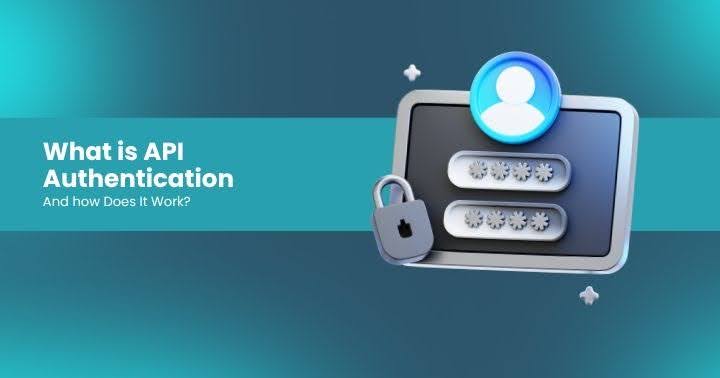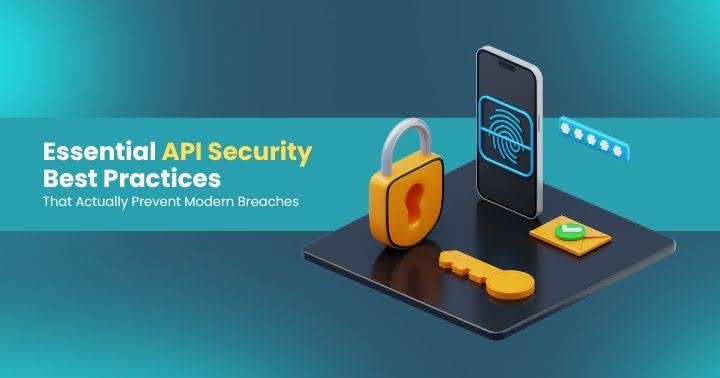What is API Authentication and How Does It Work?
APIs power most modern digital experiences, but they’re also prime targets for unauthorized access. Learn what API authentication is, how it works, and the best methods to keep your data secure.

APIs drive nearly every digital interaction today, from online payments to booking apps. But with such widespread use comes one big risk: unauthorized access. To keep data safe, developers must understand what API authentication is and how API authentication works in practice.
This guide breaks down the fundamentals, common methods, best practices, and how you can take your skills further with structured learning and automated tools.
Understanding API Authentication
At its core, API authentication is the process of confirming that the client making an API request, whether it’s a user, an application, or another service, is truly who they claim to be. Without this layer of trust, any system would be wide open to misuse or attack.
Why it matters is simple:
- APIs often transmit highly sensitive data such as personal details, financial records, or proprietary business information.
- Without proper authentication, attackers could exploit unprotected endpoints, impersonate legitimate users, or even exfiltrate confidential data.
- Strong authentication provides a gatekeeper role, ensuring only verified users and systems can interact with your APIs.
In short, authentication forms the first line of defense in API security. It sets the foundation for authorization and all other protective measures that follow.
How Does API Authentication Work?
The process of authentication may look simple on the surface, but it’s critical for securing digital interactions.
Here’s a step-by-step breakdown of how API authentication works:
- A client initiates a request to the API, often to fetch or update data.
- Along with the request, the client includes authentication credentials. These could be as basic as a username and password or more advanced methods like API keys, JSON Web Tokens (JWT), or OAuth tokens.
- The API server receives the request and checks the provided credentials against trusted records or an identity provider.
- If the credentials are valid, the server grants access to the requested resource. If not, the request is denied with an error response.
This flow may repeat hundreds or thousands of times per day in large applications, making secure implementation essential. Whether you’re learning how to authenticate an API for the first time or building a system at scale, this process is the backbone of trust in API communication.
Common Methods of API Authentication
Understanding what are the different types of authentication in API helps you choose the right method for your project.
Basic API Authentication
Learning how to do basic authentication in REST API is often the first step. Here, a username and password are sent with each request. Simple but less secure, so best paired with HTTPS and low-risk use cases.
API Key Authentication
Many developers learn how to implement API key authentication because it’s quick and widely supported. Each client receives a unique key to include in requests. Effective for identifying clients but limited against advanced threats.
JWT Authentication
JSON Web Tokens (JWTs) carry signed claims and are harder to forge. They’re compact, stateless, and popular in microservices.
OAuth Authentication
OAuth lets users grant limited access to apps without sharing passwords. It’s the go-to for large-scale, third-party integrations like “Log in with Google.”
Learn API Authentication with APIsec University
If you want to go beyond theory and practice the concepts you’ve just read about, APIsec University is a great place to start. Our free API Authentication course walks you through the essentials step by step, from understanding the basics to applying different methods like Basic Auth, API keys, JWT, and OAuth. You can even review the course outline beforehand to see exactly what’s covered.
Beyond authentication, we also offer a range of free courses on advanced topics in API security. Once you’re confident in your skills, you can take the next step with our Certified API Security Analyst (CASA) program. This paid certification validates your expertise and helps you stand out as a trusted professional in the growing field of API security.
Best Practices for API Authentication
- Always use HTTPS to encrypt data in transit.
- Rotate keys and tokens regularly.
- Never hard-code credentials in repositories.
- Use token expiration and refresh strategies.
Managing API Tokens and Expiration
Tokens must be carefully handled:
- Issue tokens with clear expiry times.
- Use refresh tokens for seamless sessions.
- Revoke compromised tokens immediately.
Effective token management ensures security without degrading user experience.
Introducing APIsec
Once you’ve learned the basics, securing APIs at scale becomes the next challenge. This is where APIsec.ai comes in.
APIsec is a continuous API security testing platform that automates what manual audits and penetration tests cannot. It integrates directly into your CI/CD pipeline, testing every endpoint, method, and payload with every release. Instead of static reports, it generates verified proof-of-concept exploits, helping teams fix vulnerabilities quickly and efficiently.
We also provide a free demo on our website, you can check it out to learn more about the product and get a better understanding.
How APIsec Solves Traditional API Security Challenges
Once you’ve learned the fundamentals, the next step is putting security into practice. And here’s the challenge: manual audits and penetration tests don’t keep up with today’s rapid release cycles.
Traditional Security Testing
- Runs quarterly or annually, leaving long gaps between checks.
- Covers only limited endpoints, often missing business logic flaws and shadow APIs.
- Generates static reports that quickly become outdated.
With APIsec
- Runs automatically with every release, providing real-time coverage.
- Tests every endpoint, payload, and method, including OWASP API Top 10 and BOLA.
- Delivers verified exploits with proof-of-concept, reducing false positives.
- Integrates directly into CI/CD pipelines, gateways, and ticketing systems.
- Produces audit-ready evidence for PCI, HIPAA, SOC 2, and ISO 27001.
Instead of manual bottlenecks, APIsec continuously secures your APIs so you can innovate with confidence.
Conclusion
So, what is API authentication and how does it work? It’s the process of verifying digital identities before granting access to your APIs. From basic authentication to OAuth, there are multiple methods, each with trade-offs.
The path forward is clear:
- Learn the fundamentals through courses.
- Validate your expertise with certifications.
- Secure your environment at scale with APIsec’s automated continuous testing.
Strong authentication isn’t just a best practice, it’s the foundation of trustworthy digital experiences.
FAQs
Q1. How does API authentication work?
API authentication works by verifying the identity of the client making a request. This is done using credentials such as an API key, token, or password. The server checks these credentials, and if they match stored records, the request is allowed; otherwise, access is denied.
Q2. What is basic API authentication?
Basic API authentication is a simple method where the client sends a username and password, often Base64 encoded, with every API request. It’s easy to implement but less secure if used alone. To protect against eavesdropping, it should always be combined with HTTPS for encrypted communication.
Q3. What are the 4 types of API?
The four main types of APIs are Open APIs, Partner APIs, Internal APIs, and Composite APIs. Open APIs are publicly available, Partner APIs are shared between businesses, Internal APIs are used within organizations, and Composite APIs combine multiple services into a single call for convenience.
Q4. How many types of API authentication are there?
There are several methods, but the most common types of API authentication are Basic Authentication, API Key Authentication, JWT (JSON Web Tokens), and OAuth. Each has different use cases, security strengths, and complexity levels, making it important to choose the method that best fits your application.
Q5. What is API key authentication?
API key authentication assigns each client a unique key that must be included in every API request. The server uses this key to identify the calling application. While simple and widely adopted, it lacks strong security and should be paired with other measures for sensitive environments.
Q6. Why is API authentication important?
API authentication is crucial because APIs often handle sensitive business and customer data. Without proper safeguards, attackers could exploit endpoints to steal or manipulate information. Strong authentication ensures only verified users and applications gain access, reducing the risk of breaches and helping maintain user trust.
Latest Articles
Earn your APIsec University Certificate
Earn an APIsec University certificate and badge for completing any of our courses.
Post your badge on LinkedIn and share your accomplishments. You can even receive CPE credits for taking these courses.










